The Reinvention of Rosalía
For the cover story of the inaugural issue of Rolling Stone en Español (December 2021), the Spanish pop star opens up on her innovative new album, embracing contradictions, and why she doesn’t worry about career pressures
By Diego Ortiz
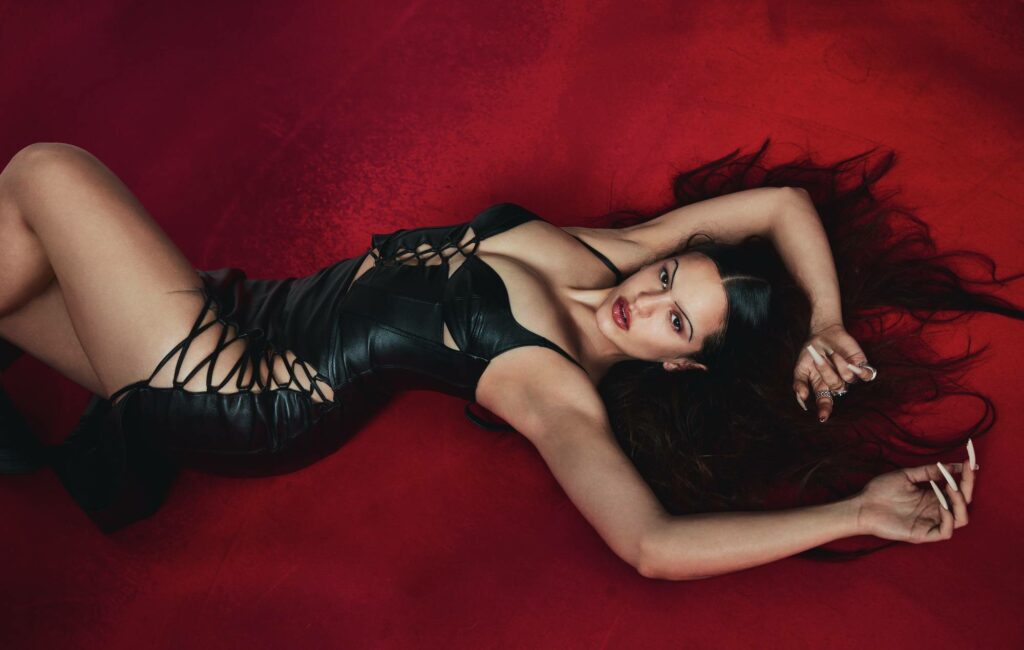
I didn’t listen to flamenco until I was 13,” Rosalía says. “When I listened to it, it was a turning point for me.” We’re at the Four Seasons Hotel in Mexico City, and she’s explaining the musical roots that have made her one of the most intriguing artists in pop today. After several encounters in 2020, today we are going to finish a conversation that began during the global pandemic. The Spanish artist has her hair up and is wearing a T-shirt that doubles as a mini-dress, plus knee-high Rick Owens boots that suggest a character out of a Mad Max movie.
For an artist on her level, Rosalía, 29, is overwhelmingly warm and familiar. We head to Sony Music Studios in the industrial uptown area, where the legendary Mexican artist José Alfredo Jiménez recorded some of his greatest songs decades ago. We plan to listen to her conceptual album MOTOMAMI for the first time there. It’s a project that has taken her more than three years to develop, but once it’s out in 2022, it will represent the creative path that’s led to her artistic emancipation.
Growing up outside Barcelona, Rosalia – who was born Rosalía Vila Tobella in nearby Sant Cugat del Vallès – felt far from flamenco, though her grandmother used to take her to dance lessons while her mother was working. It wasn’t until her teenage years that she connected to the genre through artists such as Camarón de la Isla. “Ever since I was little, I was able to dance, to sing – I don’t remember a single moment in my childhood without that,” she says. “I was singing around the house since I was 10, without any technique. I didn’t know what I was singing.” By age 16, she was obsessed with flamenco, and she started taking professional lessons. “I didn’t know I was going to be able to lend my voice to flamenco,” she adds. “There are a lot of voices in flamenco; Valderrama is not the same as Camarón.”
In 2017, she recorded Los Ángeles alongside producer and guitarist Raül Refree. It’s a conceptual flamenco album that pays homage to grief and death, showcasing the power of her voice and the scope of her ability as a soprano through shattering melodies on songs such as “De Plata” and “Aunque Sea De Noche.” That same year, while recording her second studio album, El Mal Querer, she was nominated as Best New Artist at the Latin Grammy Awards. That album catapulted her into new levels of mainstream recognition in the Spanish-language music market and beyond, and won her the admiration of critics – thanks also in part to a dozen videos made by CANADA, which served as a striking aesthetic statement for her work.
Since then, she has focused on collaborating with other artists, making back-to-back hits, including “Antes de Morirme” with C. Tangana, “TKN” with Travis Scott, “Con Altura” with El Guincho and J Balvin, and “Yo x Ti, Tu x Mi” with Ozuna.
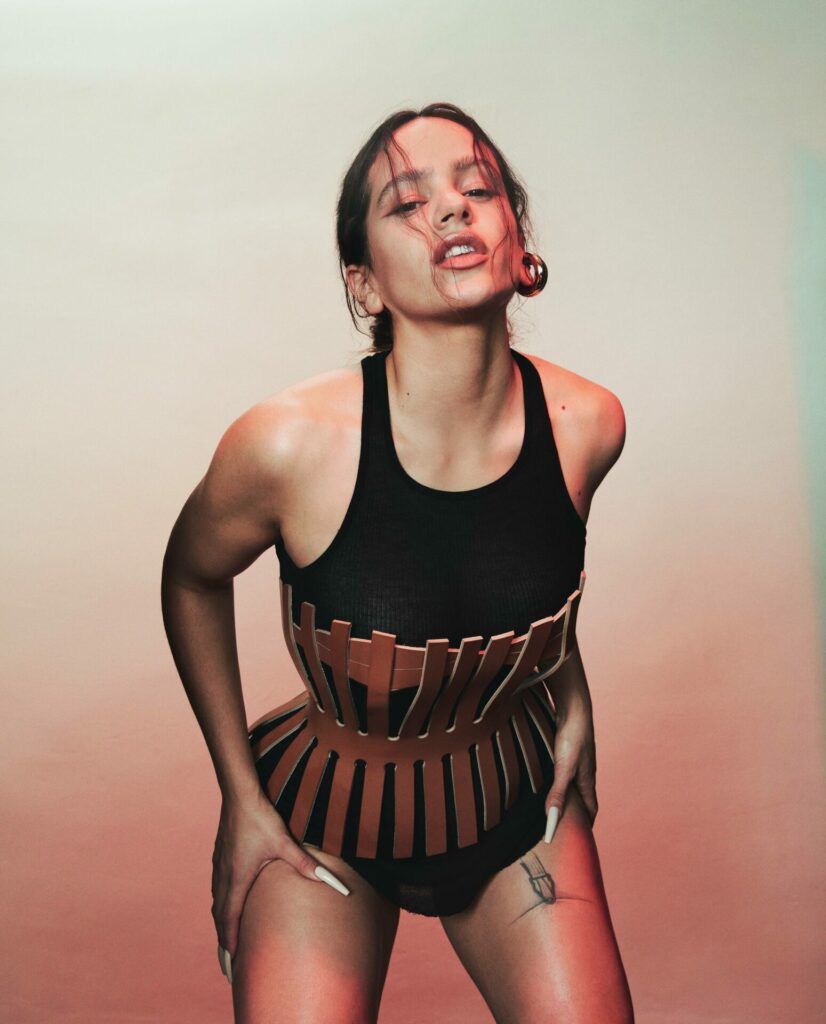
“To build yourself as a musician, you need to listen to a lot of music,” she says while setting up the audio in the Vicente Fernández studio because she doesn’t want anybody else to hear. I’m the first one to listen to this music outside her inner circle, she mentions. A cable goes straight from her laptop to the 72-channel mixing console. She offers me a glass of Mexican wine, and the first thing that we hear is “Saoco.”
MOTOMAMI is a masterpiece full of dissonance, synthesizers, and saturated organs. It’s an innovative, avant-garde work that captures Rosalía’s roots and technical capabilities, leaving you with more questions than answers once you finish.
She challenges commercial music as we know it. Catchy choruses or uniform beats? No. She takes apart the traditional structure of Spanish-language pop music, making the roots a melodic, not a rhythmic, accompaniment. Her drum triggers recall Trent Reznor’s as she takes experimentation to new heights.
MOTOMAMI‘s degree of lyrical, rhythmic, and sonic experimentation can be likened to experimental works like the Beastie Boys’ Ill Communication or Moby’s Play – albums that came from deconstruction and questioning. She can be sweet, warm, and innovative like Lorde on Pure Heroine, or rude and raw like Nine Inch Nails on The Downward Spiral. Across the album, Rosalía over-saturates and plays with her voice, pushing it to the limit without hesitation, deconstructing it to create samples and sounds that intertwine with the rhythm – if that’s what you can call the syncopated, out-of-time percussion that fires out according to the progression of each song. She rethinks structure entirely. The music is disharmonious and asymmetric, yet this is one of the album’s most exciting qualities.
Genres are a thing of the past; there’s room for everything here. Every element has been sewn together to form a skeleton of what modern music should be: art and flavour, dembow, champeta, flamenco, bachata, hip-hop, piano melodies.
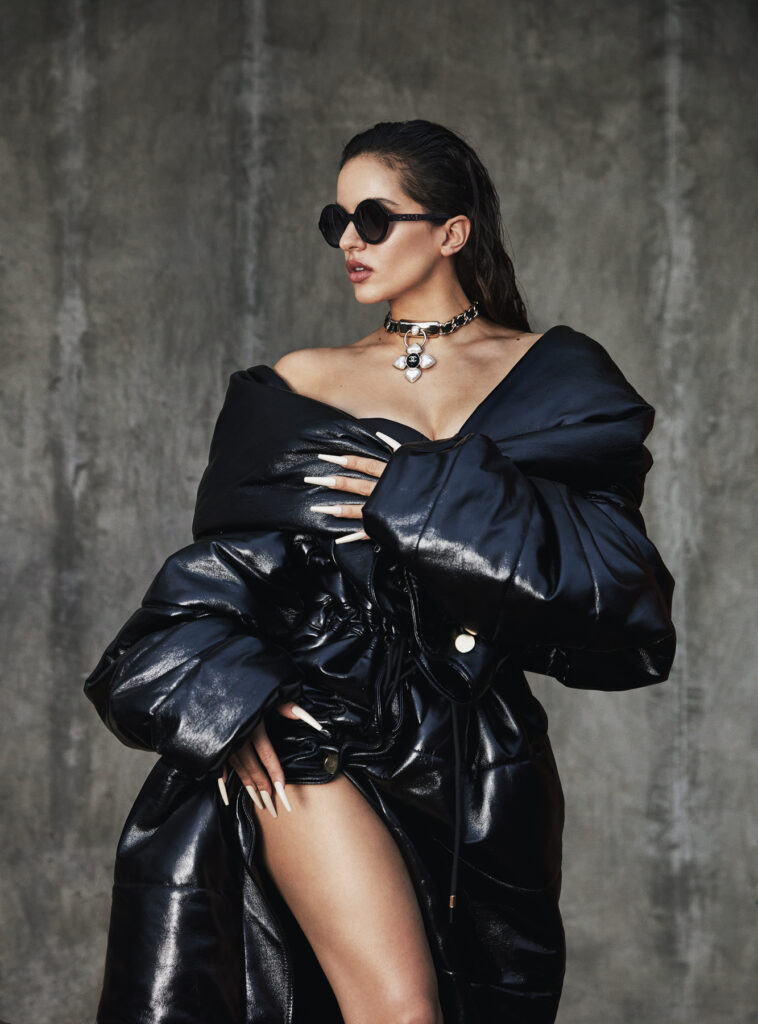
When we finish listening to her album, Rosalía breaks down crying. She’s clearly exposed the most honest product of her vulnerability. After three years of exploring, she feels as though she has completed the most important album in her career. Listening to it song-by-song recalls every discussion and session with her team. For the first time as a beholder, it seems, she understands the greatness of her work: It’s a full portrait of herself.
In the last few years, she’s made a remarkable path for herself in a ruthless industry. Questions still linger: Can we stop thinking of music in terms of formats and outdated genres? Should commercial Spanish music continue being fit into a single mold? In conversation, she seems to have, at least, some answers. Meanwhile, MOTOMAMI feels like a freight train from the future, hurtling right at us at full speed and no brakes. Rosalía is the power source behind it all.
What conclusions did you draw from making Los Ángeles and El Mal Querer? What did you gather from all that?
I actually don’t feel like I’ve changed that much since then. I’m having fun while making music differently. I approach it through different rules. When I was making Los Ángeles, I was researching flamenco; it was more of a classic thing, so I wanted to pay homage to it from a personal place. But in the end, that was it, right? And El Mal Querer was something that made sense at the time. But repeating something from that, no matter how small, wouldn’t make much sense to me. I don’t really like to look back, if that makes sense.
But it’s also what led you here.
100 percent. That’s why I’m so grateful for everything these projects have given me, but I try to put it aside when I’m focusing on what’s next. I think they allowed me to understand how to make a record. Los Ángeles, for example, allowed me to understand how to use my voice in a certain way, how to record vocals – I learned a lot from Refree while making that album. Then, with Pablo, I learned a lot about songwriting, and while El Mar Querer has a traditional flamenco part, there’s also a lot of composition. I’ve learned a lot by his side. Now, everything on this record was made from scratch. It’s far from being expressly traditional. There’s also a sense of humor, there’s irony. It’s different. I wanted to use different codes, I wanted to find another way of making a record this time.
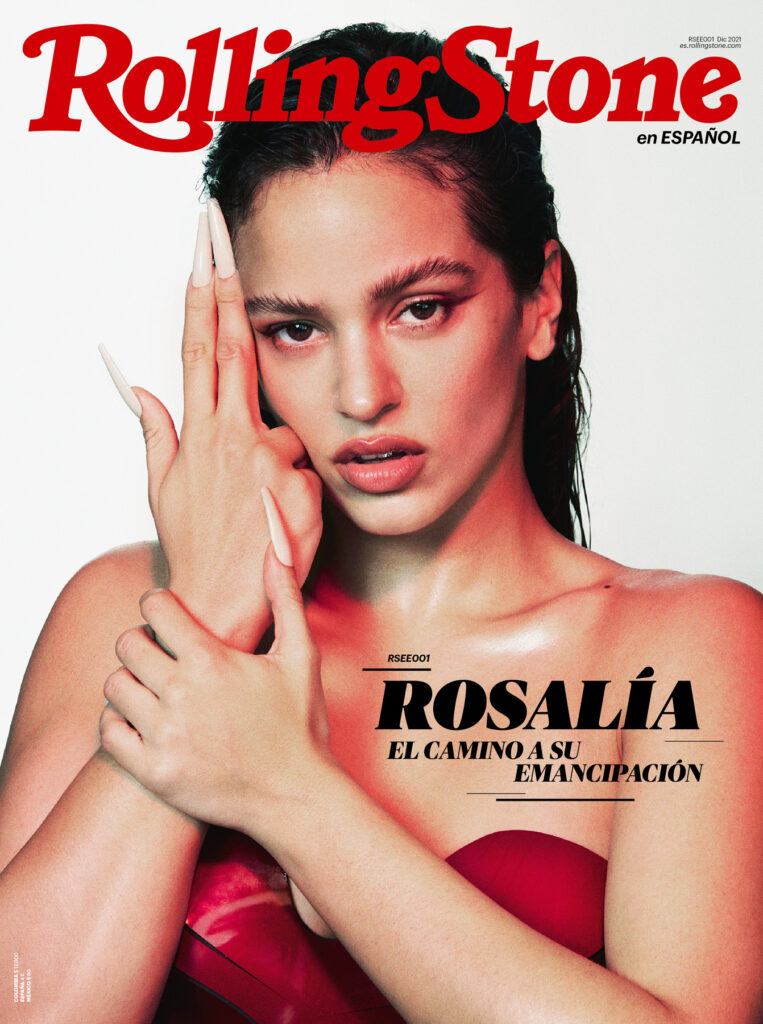
The last time we spoke, you told me the record was almost ready. What took this record so long to come out?
It’s just something that I feel when it’s actually ready and finished. Maybe I told you that because I wanted to believe it was finished, but I know it’s finished once I listen to it and can separate myself from it. At that moment, months ago, I had to constantly go back to fix this, fix that, re-record vocals. I’ve recorded a thousand vocals – some are the first take, but not most.
Besides the internal pressure to satisfy your own challenges, did you ever feel any external pressure from your team, the label, or even your audience?
Look, I felt a little of this “freaking out” energy around me, in general – a bit of this feeling as though I wasn’t moving at the right pace. But I was going at my own pace, the one I needed to be able to do this. In these last three years, I’ve wanted to focus my energy on giving this album a sense of risk and excitement overall. The industry, sure, it might seem like everything is straitjacketed, because there’s money involved. Sometimes products aren’t fresh, or don’t flow the way they’re supposed to. I’ve tried to forget about the whole context, about the business. You can say whatever you want about the record, but it has risk and emotion – at least I think so and I hope so.
It’s also a brave record.
That’s one of the best adjectives you can get. I appreciate it a lot, because I do feel like I’ve taken risks. I really think so.
This album has an extra element, which is the pandemic. Did that help you or was it an interruption?
There’s a kind of isolation present on this project.
When you talk about isolation, were you literally alone?
I spent a lot of time alone, yes. There was a lot of time when I struggled and felt on the edge of an abyss. At a creative level, it felt like an abyss. On other records, I always had company, even when I was the one pushing things forward because I had a clear picture. In this case, more than ever, I felt the weight and the responsibility of the entire project. Even if I felt that way before, it was different here. I’ve worked with various producers; I’ve collaborated with various people. I’ve enjoyed it, but I had to fight for it.
With previous albums, I didn’t have that feeling. Everything flowed like water, easy. I’ve been truly alone at times. But I’ve also had company, and I have to say that I’m really grateful to all the collaborators. That’s why I don’t see isolation or the time I spent alone as a negative thing. It made me really push myself as a writer and as a producer.
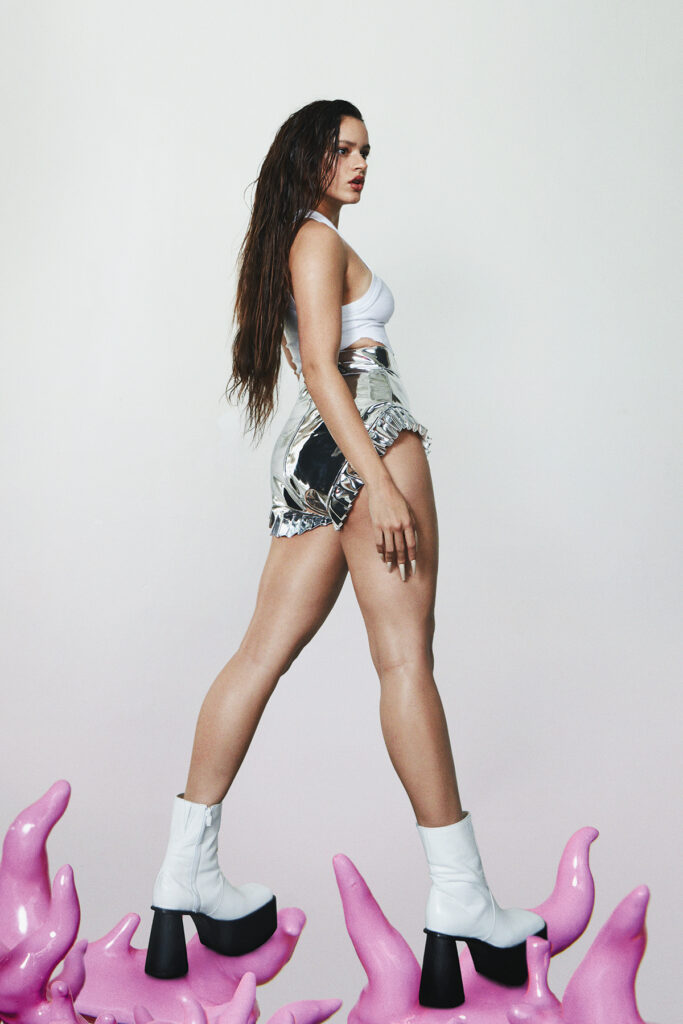
All conceptual albums have clear objectives from the beginning. What were your specific goals for this album?
I really liked it when you said it is a statement of principle, because I think it is. Conceptually, lyrically, too. I think it’s the most personal and confessional album that I’ve made so far. I’ve always considered myself a storyteller. MOTOMAMI is the most personal story I’ve told. In my head, MOTOMAMI makes sense as a concept, as a feminine figure building herself. So, that’s how it goes: It’s almost like a self-portrait, when an artist makes a self-portrait in the context of the modern world.
How does feminism continue to impact your work today?
For me, it has been very important. For example, collaborating with Tokischa, Rita Indiana, Caroline Shaw – these are the women who are part of this project. The album title is a feminine name, even though “moto” is one thing and “mami” another. For me, there’s a duality, just like in its sound. The record is structured in binaries, two types of contrasting energy. So, when you talk to me about feminism, I think that’s implicit in the intention – it’s very radical and it’s very much present in some songs, and maybe not some much in some others, because in the end, it’s all the emotional journey of the ups and downs an artist can take. There’s a lot of my day-to-day life – that’s why this vindication of women and femininity are implicit.
Male artists in many genres have found success perpetuating macho and misogynist tropes. What do you think about that?
I’d be very happy, perhaps, if this record provides a counterbalance to what you’re talking about. I haven’t always found female figures who write in a rawer way, particularly in music or Spanish folk music. It’s easier to find those figures in English music rather than Spanish music. In this album, some songs are a response to some of the ideas you’re talking about, viewed from another perspective.
Is that something you do consciously?
There’s always an aspect of creativity that’s irrational. It’s there, happening. And there’s another piece of it that has to do with making the decision to go that way. They’re both there. But I also believe it’s not only a reggaeton issue. It’s a reflection of society. If this is happening in music, it’s because there’s something happening at a social level, in the real world.
That keeps it alive.
Exactly. So, we better ask ourselves what is going on and what we still have to do in that regard.
Do you take it seriously when artists you consider colleagues engage with these tropes?
I don’t take it too seriously, because there are times in which I think a sense of humour also plays a part in all this. Music can also be fiction, and it doesn’t need to be politically correct. So, I view it from there. I don’t judge an artist or a friend of mine if they don’t talk in a way that makes me feel comfortable. I approach them and I say something, but I don’t judge their work because I base myself on the principle that music can be fiction, just like a movie. And no one judges a movie when it brings not-so-pretty realities to the table.
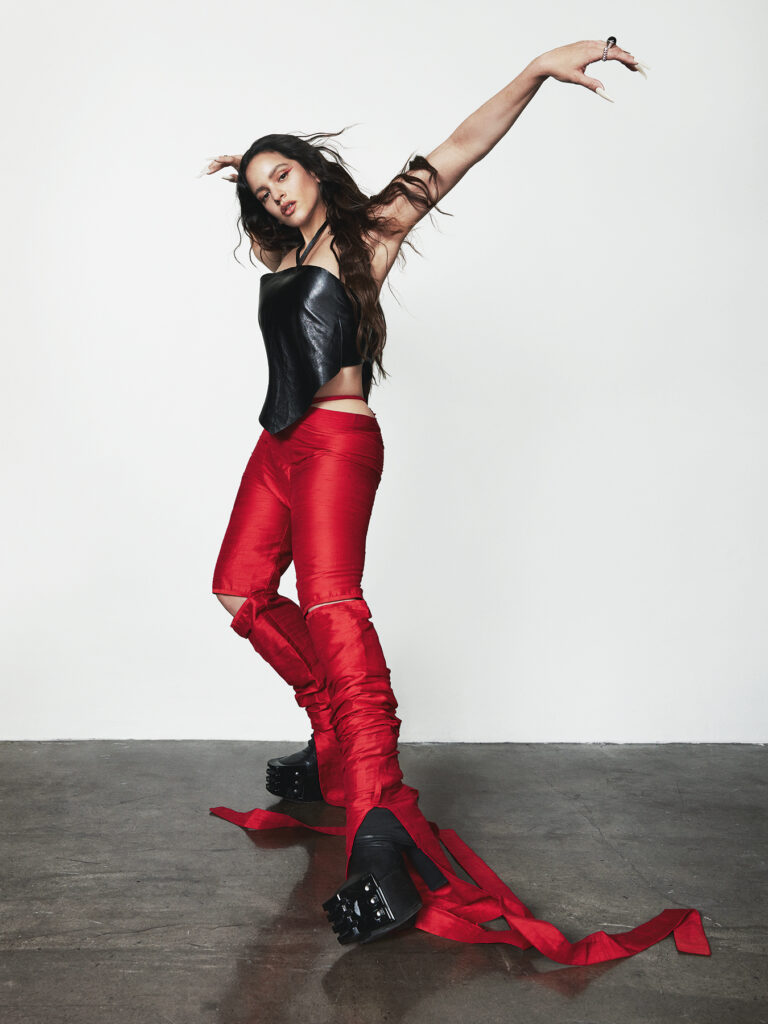
What conclusions have you drawn from all the collaborations you’ve done throughout these years? There are some songs that you’ve released on their own that don’t fit into a concept album like this.
I feel like a kid on a playground. There are a lot of options, and I’m having fun, because it actually has been pure fun. Since El Mal Querer I’ve been able to go to the studio with some artists that I admire and enjoy having around. So it’s not that premeditated, you know? I’ve learned a lot from working with other musicians, other producers, other artists, which I wasn’t able to do when I was studying in Barcelona.
It is not as strategic as one would think.
No, not at all. It’s like, “Okay, we’re in the studio, this feels alright. It resonates, I’m going to share it.” Although, I prefer to think of it in projects. I truly believe that’s when I enjoy and push myself the most, if that makes sense. When I think of an album as a project, I really enjoy making albums more than singles. But it also makes sense to do some collaborations.
What were the conceptual references for this record?
I’ve been listening to a lot to Héctor Lavoe, I’ve been listening to a lot to Nina Simone, Patti Smith, Bach, dembow, classic bachata, and as I mentioned before, a lot of reggaeton. Vivienne Westwood amazes me, inspires me, Michèle Lamy inspires me, [Pedro] Almodóvar continues to inspire me. I’ve been watching [Andrei] Tarkovsky’s movies.
Do those references change over time for you?
Yeah. I’ve been watching a lot of artists’ documentaries because there’s an autobiographical part on this album, a lot of references to my daily life. But there’s also a reflection of the artist or the artist figure, and how it relates to the exterior world, to the audience as well, to the world she’s exposed to.
So, there’s a lot of that. I was also curious about not only how I was feeling, but how others felt. Watching Nina Simone’s documentary shaped me. Reading a book about Chavela [Vargas’] life and listening to her catalogue has shaped me. It’s all in there. I owe a lot to these role models.
How – and in what ways – has reggaeton influenced your career?
Ivy [Queen], for example, was a great reference for me, mostly because of the way she carries herself: “La caballota,” to introduce yourself that way is very powerful. She’s an irreverent artist in the way she does things and how she’s done things. Reggaeton has always been a part of my life since I was 11, and I heard it for the first time at a local fair, dancing to Don Omar with my cousins. It’s been very organic, just as with flamenco.
When I was studying, I would listen to Arcángel or Daddy Yankee on my way there. It’s part of my experiences, of the music I’ve always listened to, so it’s like an approach that comes to me naturally.
Your music ranges over all kinds of musical and emotional tones. Songs like “De Plata” and “Linda,” for instance, are worlds apart. How do those fit together for you?
I remember buying a mixtape with reggaeton songs when I was 13, and I danced to it at home because I enjoyed it. I’ve always had a passion and love for the music that comes from the Caribbean. I’ve always loved it. So “Linda,” for me, it’s joy. “De Plata” is grief. It’s almost polarized. It could even give the feeling of what you just mentioned, but in reality, everything is the same. In life, there’s grief and celebration in the same way. So, to me, it’s all the same, even though they’re different energies, different codes.
It’s the depiction of emotion, after all.
Yes, and also of energy. If the energy is present – each listener will decide if it’s there or not – but if it’s there, the approach, the theme, or the intention used won’t matter.
“De Plata” is such a strong song that you can imagine it could have been written by Ennio Morricone.
That’s also traditional flamenco.
Songs like that make you forget that it’s flamenco. They’re just songs with beautiful melodies. Speaking of which, do you think that, nowadays, Los Ángeles would have landed differently?
I don’t know, only God knows. I have no idea. But if I had the chance right now to make my next album like Los Ángeles, I would do it, 100 percent. But that album made sense in that context; it was unrepeatable, this moment I was in, focusing on understanding flamenco and meeting Refree. When those things happen, it’s because they’re meant to be.
It’s different when you have nothing to lose. Right now, I’m working with my family, my team has expanded a lot over these last few years. Making music without any kind of responsibility is not the same when you have a big team with you.
At the beginning of this album, I was like, “I can’t hear clearly, I can’t think straight, I can’t see or feel clearly.” There was this huge abyss with everything that was going on that it took me a while to find the pieces of this puzzle. But if this confusing context has been of any use, it helped me assert myself and define the path, no matter if it’s through other influences and other approaches that I also enjoy.
I’ve always listened to Lil’ Kim, I’ve always listened to Tupac. It’s not that different for me to make a song where I’m rapping. It’s using my voice in various ways, because my voice is an instrument – it’s absurd to use it in one way only. This album has many different influences after all; it’s like a broad palette of possibilities, of colours, and there are brushstrokes here, brushstrokes there. And it makes sense that way because that’s what it makes it a journey.
And that’s how life goes.
Yes, you go up and you go down. There are times in which you have to kind of reconcile the genres between them. Sometimes we talk about good or bad art, good or bad music – I don’t think of it that way. Many genres inspired this album, and I celebrate that. In the end, I want my career to be like a love letter to all the music I love, and this album is part of that.
I know it’s not a banner of flamenco, because that wasn’t your intention either.
It’s just, holding a banner – that’s heavy, right?
Sure, but did you feel the pressure of thinking, “I’m a Spanish artist, and I’m making Spanish folklore?”
No, and when you talk about waving a banner, that’s not the case either. They’re too heavy. I think that would limit me creatively, and whatever feels taboo or limiting inhibits you creatively. That goes against the process. I’m not interested in that. I know my goal is to gain more freedom as an artist, and carrying a banner would be the complete opposite.
How did you balance the ambitions around this album? Because you have personal ambitions, you have artistic ambitions, your team has other ambitions that they must tell you about, your label has ambitions, and at the end of the day, there can be a great ambition…
Well, there are two songs. In “Delirio de Grandeza,” I sing, “La ambición, delirio de grandeza.” (“Ambition, delusions of grandeur.”) [Justo] Betancur said that, and I thought it was a great idea to write a song about that, about fame, because I do want everything that surrounds me to impact my music, my sound. And then, let it be whatever God wants.
I didn’t begin my career by making hits. If I have any, it’s thanks to the people who have shown their support. I think I’ll try to continue working like this, working on projects, making music I believe in. If I happen to have a big song: cool! I’ll throw a party, I’ll have an absolute blast, I’ll be thrilled, I’ll celebrate and feel thankful for it.
From a lyrical perspective, what themes did you want to approach on this album? How important is love and heartbreak?
Transformation, sexuality, heartbreak, celebration, spirituality. Everyday things, too, and self-respect. All of those things are included; they’re understood and shared at the same level. So, heartbreak can be a place where you start to write from, but it’s just one more thing.
I don’t want to get stuck there unless I’m going to make an album solely on heartbreak. El Mal Querer has some of that, but I don’t think a whole album about heartbreak is that interesting. I like to think of myself as a storyteller, I can talk about many different things, and that’s more challenging for me. It’s far more interesting to see someone tell stories from different places. Heartbreak is just another thing; it’s not better, it’s not worse.
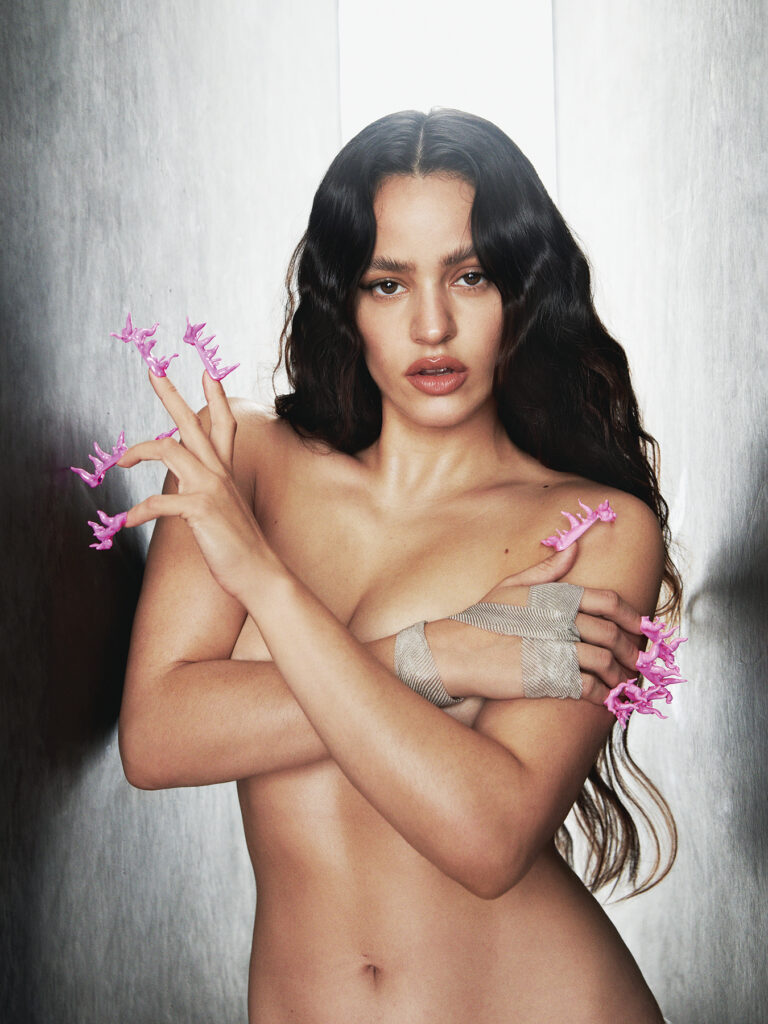
What do you think about the degree of uniformity that Spanish music can have today? And I mean in commercial music, because Latin America is clearly full of diversity. How have you tried to escape from that? Is there some rebellion there?
[Laughs.] I understand. I make music I like to listen to, if that makes any sense. I enjoy listening to Oneohtrix Point Never, Arca, Frank Ocean. I like, as another example, Wisin y Yandel. I try to find a way for many things to coexist, to reconcile them once again, to reconcile the energies I enjoy. I don’t like it when something sounds too preconceived, something that I’ve heard a million times. It’s not challenging. I like if something happens in the lyrics, even if the music might be familiar, or maybe everything feels familiar, but you’ve never heard a melody or production a certain way.
Popcaan’s album, for example, is very pop. But his melodies, his phrasing, everything feels super fresh and that’s very special.
Maybe that’s the key, that making “true” things is what makes pop. I mean, the Rolling Stones making rock & roll 60 years ago was pop.
Yes, exactly. After all, pop’s best quality is that it’s accessible, it’s inclusive. Kanye has something that resonates with people.
My studio approach is experimentation, always. How can I make a bachata without a guitar? How can I make this vocal sound more saturated than ever? How can I make this vocal sound really fragile and close to your ear? You have to really compress it and watch out for all those details, so all those genres can coexist in a song.
That’s what I interpret from experimentation. It comes out naturally. But, at the same time, making inclusive or accessible music is also an objective of mine, because I don’t make music just for myself. I don’t make music just to be happy, I don’t make music just because it completes me. I don’t make music just because I know that I was born to learn how to write songs. It’s for everyone else, it’s for sharing. It would be too selfish of me to make music that only satisfies me. Then I think, how can I make it so that it’s faithful to my creative process and also resonates with people? It has to resonate, and sometimes it’s not easy. You never know if it’s going to happen or not. But I think it’s okay if at least the intention is there.
